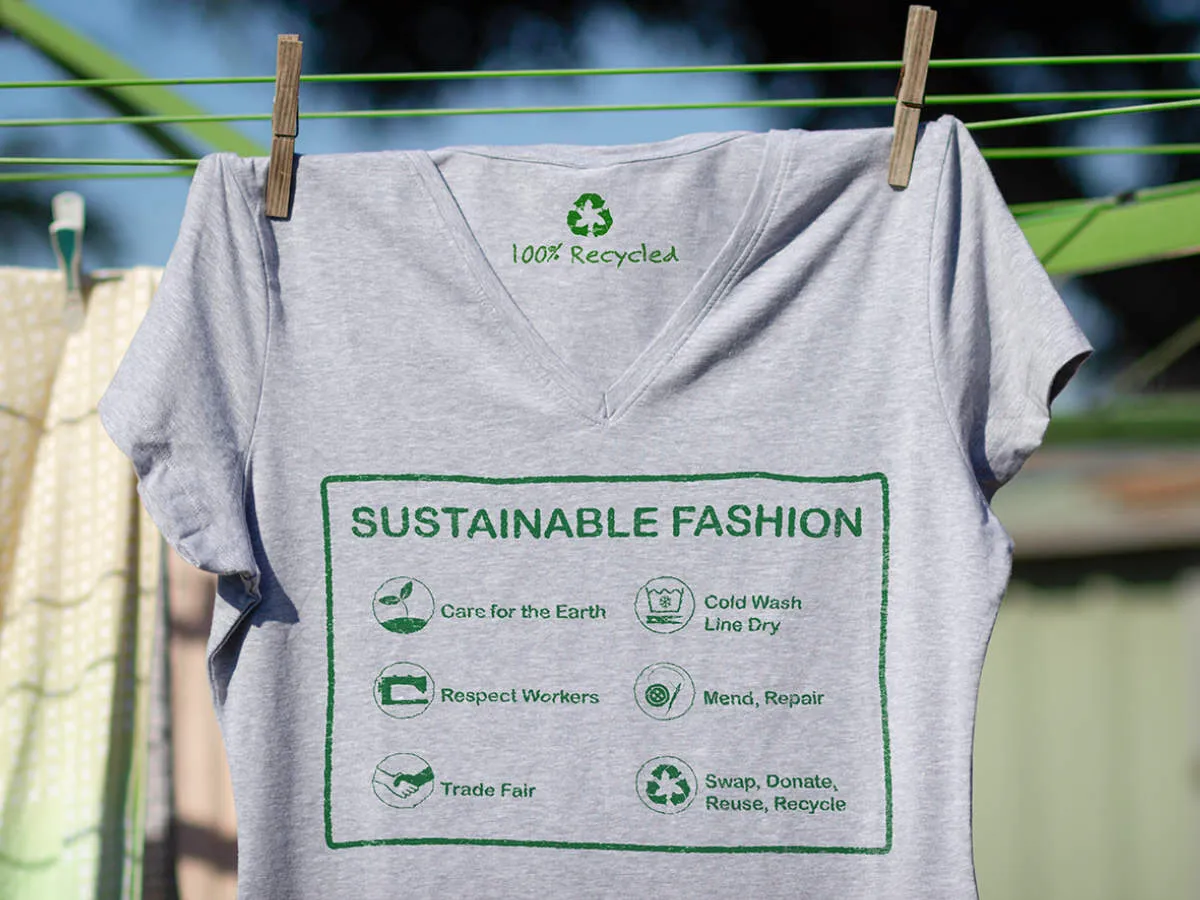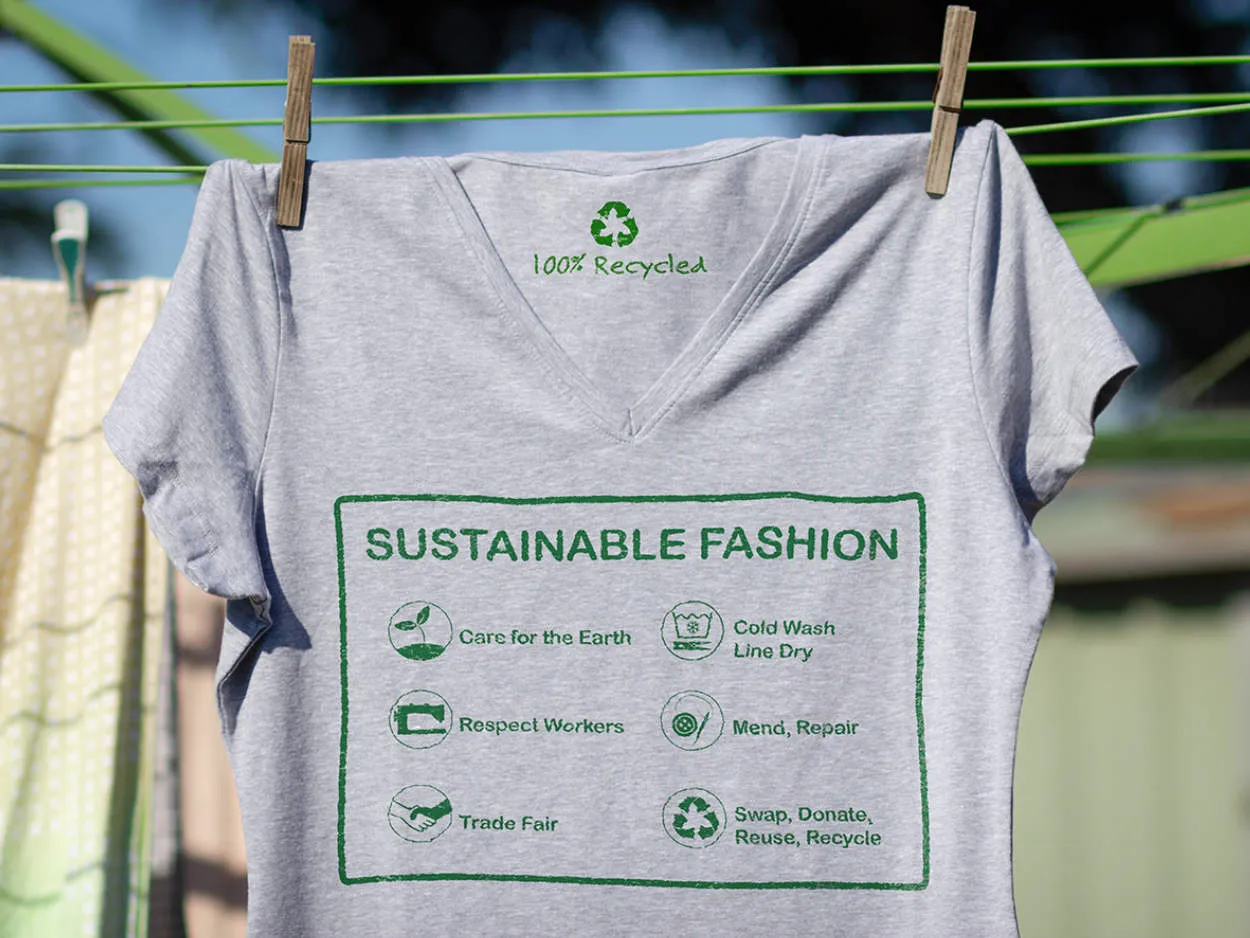Discovering sustainable fashion is a crucial step towards creating a more eco-friendly and ethical wardrobe. In this guide, we will explore various sustainable fashion choices, from eco-friendly fabrics to ethical production practices, helping you make informed decisions that are both stylish and sustainable.
Understanding Sustainable Fabrics

In this guide to sustainable fashion choices, it is essential to understand the concept of sustainable fabrics. Sustainable fabrics refer to materials that are produced, processed, and used in a way that has a minimal impact on the environment and promotes ethical practices.
Here are some key sustainable fabric options to consider:
1. Organic Cotton
Organic cotton is grown without the use of synthetic fertilizers, pesticides, or genetically modified seeds. It requires less water and promotes soil health, making it a sustainable choice for clothing production.
2. Hemp
Hemp is a versatile and durable fabric that requires minimal water and pesticides to grow. It is highly sustainable and can be used for various clothing items and accessories.
3. Linen
Linen is made from the flax plant and is considered one of the oldest sustainable fabrics. It is biodegradable, requires less water and energy to produce, and has a low carbon footprint.
4. Bamboo
Bamboo fabric is derived from the fast-growing bamboo plant, which requires fewer pesticides and water compared to traditional cotton. However, it is crucial to ensure the bamboo fabric is processed using eco-friendly methods.
5. Recycled Fabrics
Recycled fabrics, such as polyester made from recycled plastic bottles, help reduce waste and conserve resources. They require less energy and water during production, making them a sustainable option.
By choosing sustainable fabrics, you can contribute to a greener and more ethical fashion industry. Remember to research and support brands that prioritize sustainability and transparency in their production processes.
Ethical Fashion Brands
In today’s world, where environmental and social concerns are becoming more prominent, sustainable fashion choices are gaining popularity. By supporting ethical fashion brands, you can make a positive impact on the planet and society. These brands prioritize ethical practices throughout their production process, ensuring that workers are paid fair wages and working conditions are safe. Additionally, they aim to reduce their environmental footprint by using eco-friendly materials and adopting sustainable manufacturing techniques. Here are a few ethical fashion brands to consider:
1. Patagonia
Patagonia is known for its commitment to the environment and social responsibility. They produce high-quality outdoor clothing and gear using sustainable materials, including recycled polyester and organic cotton. Patagonia also promotes fair labor practices and regularly supports environmental initiatives.
2. Everlane
Everlane focuses on transparency and ethical production. They offer a range of modern basics, including apparel, accessories, and shoes, utilizing sustainable materials and ethical factories. Everlane provides detailed information about their supply chain, including the cost breakdown of each product.
3. Reformation
Reformation is renowned for its stylish and sustainable clothing. They prioritize responsible manufacturing and use eco-friendly fabrics, such as Tencel and recycled materials. Reformation also ensures fair labor conditions and implements recycling programs for their packaging and textiles.
4. People Tree
People Tree is a pioneer in sustainable fashion, producing ethical clothing for over 30 years. They work with fair trade artisans, organic cotton farmers, and traditional craft communities to create their collections. People Tree values transparency and provides information about their suppliers and organic certifications.
By supporting these and other ethical fashion brands, you can make a conscious choice towards a more sustainable and responsible fashion industry. Remember to research and read product labels to make informed decisions that align with your values.
The Impact of Fast Fashion
Fast fashion has revolutionized the way we shop and consume clothing. With its quick turnaround from runway to store shelves, fast fashion has made trendy and affordable clothing readily available to the masses. However, the rise of this industry has come with several negative consequences.
1. Environmental Impact
Fast fashion heavily contributes to environmental degradation. The production of textiles involves substantial water consumption and chemical usage. Additionally, the disposal of discarded garments leads to overflowing landfills, contributing to pollution and greenhouse gas emissions.
2. Labor Exploitation
Most fast fashion brands rely on cheap labor from developing countries with weak labor laws. Sweatshops and poor working conditions are common in the supply chain of these brands. Workers are often underpaid, overworked, and subjected to unsafe working environments.
3. Overconsumption
The fast fashion business model is based on encouraging consumers to constantly buy new clothes. The low prices and constant influx of new collections fuel a culture of overconsumption. This leads to a tremendous waste of resources, as clothes are worn only a few times before being discarded.
4. Quality and Durability
Fast fashion prioritizes quantity over quality, resulting in poorly made garments that quickly fall apart. This disposable mindset encourages consumers to constantly replace their wardrobe, further contributing to the waste problem.
5. Lack of Transparency
Many fast fashion brands keep their supply chain practices hidden, making it difficult to trace the origins of the clothing we buy. This lack of transparency makes it challenging to ensure ethical and sustainable production standards.
Conclusion
The impact of fast fashion is undeniable. It harms our environment, exploits laborers, promotes overconsumption, and lacks transparency. As consumers, we have the power to make a difference by supporting sustainable fashion choices. By opting for quality over quantity, buying from ethical brands, and embracing second-hand options, we can contribute to a more sustainable and responsible fashion industry.
Building a Sustainable Wardrobe
When it comes to making sustainable fashion choices, building a sustainable wardrobe is crucial. By opting for sustainable clothing options, we can significantly reduce our environmental footprint and support ethical practices throughout the fashion industry. Here are some key considerations to keep in mind:
-
Invest in Quality, Timeless Pieces
Instead of buying lots of cheap, fast fashion items that are likely to get worn out quickly, focus on investing in high-quality garments that will last. Choose timeless styles that won’t go out of fashion, allowing you to wear them for years to come.
-
Choose Natural and Organic Fabrics
When shopping for clothing, opt for natural and organic fabrics such as cotton, linen, hemp, and silk. These materials are biodegradable and have a lower environmental impact compared to synthetic fibers like polyester.
-
Support Sustainable and Ethical Brands
Do your research and support brands that prioritize sustainability and ethical practices in their production processes. Look for certifications such as Fair Trade, Global Organic Textile Standard (GOTS), or Bluesign, which ensure fair wages, safe working conditions, and environmentally-friendly production methods.
-
Embrace Slow Fashion
Avoid falling into the trap of fast fashion trends and instead embrace the concept of slow fashion. Slow fashion promotes mindful consumption, focusing on quality over quantity and encouraging repairing, reusing, and recycling clothing items.
-
Secondhand and Vintage Shopping
Consider purchasing clothing from secondhand or vintage stores. This not only gives new life to pre-loved items but also reduces the demand for new garments to be produced, saving valuable resources.
-
Take Care of Your Clothes
Properly care for your clothing to extend their lifespan. Follow care instructions, mend small damages, and wash items only when necessary using eco-friendly detergents and cold water.
By following these guidelines, you can gradually build a sustainable wardrobe that aligns with your values and contributes to a more environmentally conscious fashion industry.
Caring for Eco-Friendly Clothing
As you embrace sustainable fashion choices, it is important to also understand how to care for your eco-friendly clothing. By taking proper care of these garments, you can extend their lifespan and minimize your environmental impact. Here are a few tips to help you care for your eco-friendly wardrobe:
-
Wash with eco-friendly detergents
Choose detergents that are specifically designed for eco-friendly clothing. These detergents are typically made from plant-based ingredients and do not contain harsh chemicals that can harm the environment.
-
Use cold water
Washing your clothes in cold water not only saves energy but also helps maintain the color and shape of your garments. Most eco-friendly materials, such as organic cotton and bamboo, do well with cold water washes.
-
Avoid the dryer
Instead of using a dryer, opt for air-drying your eco-friendly clothing. Hanging them outside or using a drying rack not only saves energy but also prevents any potential damage that heat from the dryer may cause.
-
Mend and repair
If you notice a small tear or loose button on your eco-friendly clothing, take the time to mend them instead of throwing the garment away. Learning basic sewing skills can go a long way in extending the life of your clothes.
-
Proper storage
Store your eco-friendly clothing properly to avoid damage. Fold them neatly in a dry and cool place, or hang them on sustainable hangers to maintain their shape.
By following these tips, you can ensure that your eco-friendly clothing stays in great condition for a longer duration. Additionally, remember to research brands and fabrics that prioritize sustainability when expanding your wardrobe.
Fashion Recycling and Upcycling
Fashion Recycling and Upcycling are sustainable practices that have gained significant popularity in the fashion industry. These practices focus on reducing waste, reusing materials, and giving new life to old garments or textiles. By engaging in fashion recycling and upcycling, individuals can make more sustainable fashion choices and contribute to the preservation of the environment.
Recycling in Fashion
Recycling in fashion involves breaking down used garments and textiles into raw materials, which are then used to create new products. Fabrics can be sorted, shredded, and re-spun into new yarns, giving them a second life. Recycling also reduces the need for virgin materials and minimizes waste that would otherwise end up in landfills.
Upcycling in Fashion
Upcycling in fashion takes a creative approach by repurposing or transforming old garments into new and improved designs. Instead of breaking down the materials, upcycling focuses on enhancing their value and turning them into unique, one-of-a-kind pieces. Upcycled fashion allows for individuality while avoiding the consumption of new resources.
The Benefits of Fashion Recycling and Upcycling
Fashion recycling and upcycling offer several benefits for both the environment and consumers. Firstly, it reduces the demand for new materials and decreases the carbon footprint associated with manufacturing new clothing. Secondly, it helps combat the problem of textile waste by extending the lifespan of garments. Lastly, it promotes sustainable fashion choices and encourages conscious consumption.
Conclusion
In conclusion, incorporating fashion recycling and upcycling into our wardrobes allows us to make more sustainable fashion choices. By recycling and upcycling, we can reduce waste, conserve resources, and contribute to a greener fashion industry.
Conclusion
In conclusion, making sustainable fashion choices is essential in order to reduce the negative impact on the environment and support ethical practices in the fashion industry. By opting for sustainable materials, shopping second-hand, and supporting brands with transparent and responsible practices, individuals can contribute to a more sustainable and ethical fashion future.



